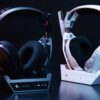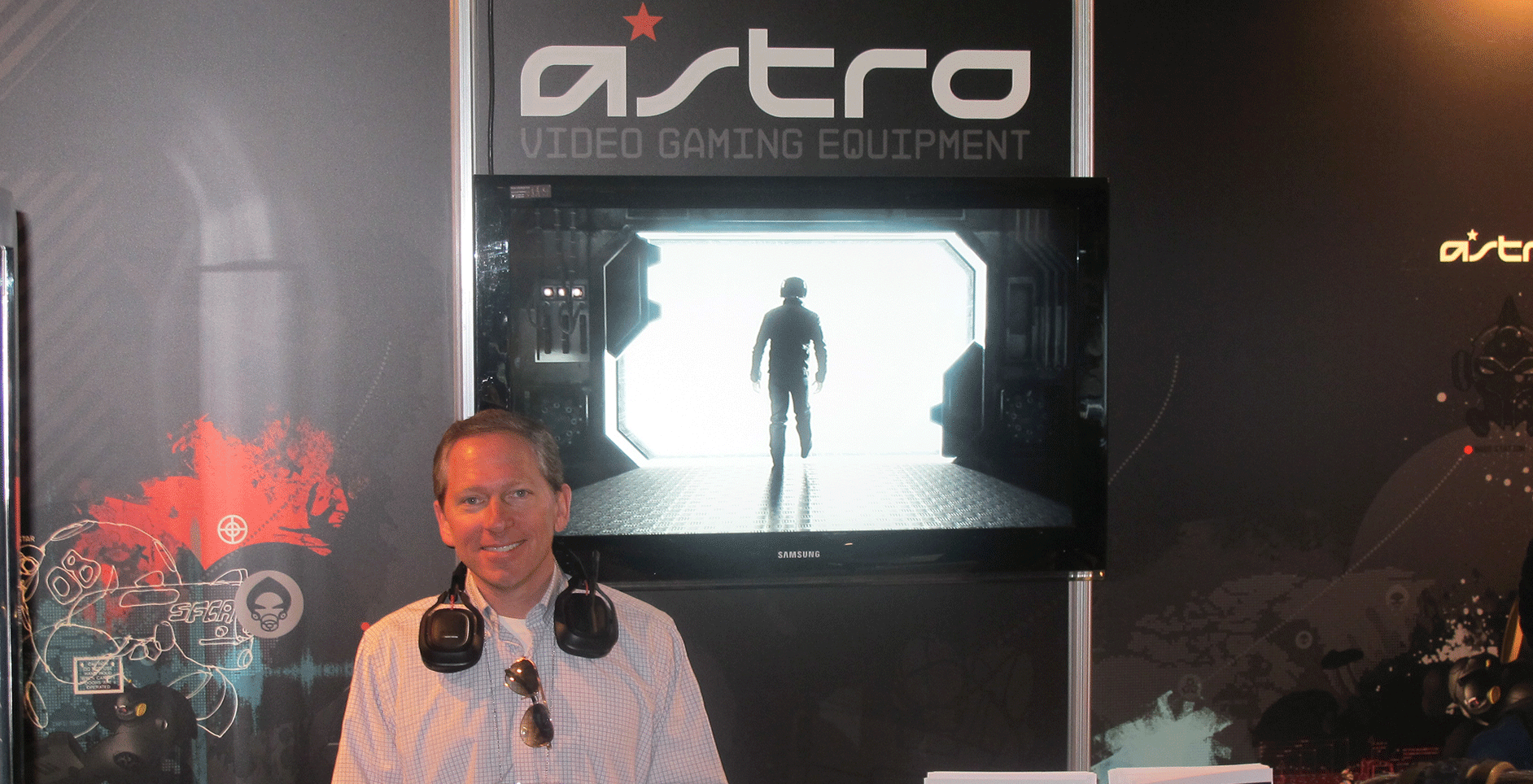We got the chance to chat with CEO, Founder and President of Astro Gaming, Jordan Reiss. We got the chance to talk about the humble beginnings of Astro, the quick rise of eSports, Astro’s stance on Virtual Reality and the future range of Astro headsets.
The brand new Astro A50 Wireless Headset is available October 23rd for $479, the A40’s with Mixamp is available now for $429 and the A40’s TR Stereo with Xbox One M80 Mixamp is available now for $349.
Design is very big element of the Astro products, so what is your basic design philosophy when you design a new product?
ASTRO products always start with a person. A person that we are trying to solve a problem for through both design and function. We begin every project by recognizing that there is a need for something, and then designing around that need. In the case of the original A40, that need was for a tournament grade headset that combined game sound and voice communication. Back then people were wearing two headsets when competing: one for game sound, and the other for communication. Ultimately, it always comes back to our designers really taking the time and trying to understand the person we are solving a problem for. Initially, even with the A40, we spent close to two years travelling around with professional gamers testing out prototype headsets and collecting feedback. If you can’t design a product for a specific person who has very specific needs, it’s going to be very hard to have that product ultimately be successful.
We were lucky to have access to a very talented group of designers right from our beginning as we created ASTRO Gaming out of a product design studio: ASTRO Studios, which had some of the best product designers in the world. So, you take amazing industrial designers, paired with the company philosophy of solving problems, and then marrying those with a great engineering team to actually deliver.

Designing regular headphones is one thing, but what is the biggest challenge Astro faces when it comes to designing gaming-centric products?
In gaming-specific headphones, one of the problems is the diversity of ecosystems you need to work in. With audio headphones, for the most part, there’s a 3.5mm jack, you plug it into anything and it works great. However, with gaming audio, Xbox has one set of parameters, PlayStation has another, and PC is all over the map. It’s really complex to make a product that works across all platforms. You also have to do it in such a way that it doesn’t cost a thousand dollars because there’s obviously a ceiling, I think, to how much people will pay for a gaming headset. Consoles are three hundred dollars by themselves, and on the PC side of things you obviously spend more, but trying to pack all that technology and functionality into a price point that’s affordable is a big challenge too. I’d say cross-platform compatibility and the ecosystems constantly changing are the biggest issues.

How important is Astro’s relationship with esports and professional gaming?
I can certainly say that without eSports, we wouldn’t be here today. I mentioned that in the first 18 months of the idea of this company that we spent a large amount of time with a professional gaming team. A Halo team specifically, and we followed them to every tournament and really tried to understand what the eSport gamer needed and also tried to understand what the league needs. The league is also trying to create audio content and voice content can be an immersive part of that stream that connects the audience to the players. From a product perspective, those relationships were paramount and we absolutely love being a part of it.
The world of eSports is an incredibly exciting place to spend time, it’s also very important to us because that is where we started. We’ve always remained connected to that space whether it be sponsoring teams, sponsoring events, or holding our own events. It’s just a great environment that constantly changes and will spur more problems that need solving. I want to know when there is an audio-related problem in the esports industry, so that we as a company can provide a solution in product development. Those types of extreme environments let us know where we need to be working in the future.

Recently, the Houston Rockets General Manager stated that eSports would soon rival NBA and international soccer. What’s your stance on the growth of esports.
It feels like it’s starting to hit that tipping point. You are even seeing professional traditional athletes buying eSport teams and the price of sponsoring those teams going up. It’s always been under the table avoiding much of the mainstream media and now it’s starting to tip over into that world. There are more and more non-gaming brands throwing lots of money at eSports and teams. It’s only going to accelerate from here. Our hypothesis about gaming 10 years ago saw parallels in what happened with skating and surfboarding once they transitioned from hobbies and became mainstream professions. Gaming was another slacker hobby that we knew would eventually transition into a profession and become a billion dollar plus industry. The growth rate is definitely quicker than any other sport.
What do you think really sets Astro apart from other headsets on the market?
Design definitely. That’s one of those intangibles. You recognize good design when you see it, but it’s hard to pull off correctly even though everyone thinks they’ve got good design. Also, the editing of the unnecessary features that you pay for, but never use. Editing those unnecessary features allows more flexibility when it comes to the quality of the materials and components that you choose, which make a big difference. We’ve got the luxury of being at the high end of the price spectrum which means we can put extra quality into the parts that we use in the products. Combine all of that together and you get a product that feels, performs, and looks great.
I do think that you also get something special when you buy an ASTRO product that differs from a lot of our competition. There is a special sense of being a part of our ASTRO family, where you can connect with our team online and at events. As a family member, we’ve also got your back and won’t hesitate to fix a problem. We’ve got a lot of loyalty to our customers and I feel like we’ve built this amazing community behind our brand over the last ten years.
What are your thoughts on VR? Do you have any interest in the product category?
It’s an interesting one and it’s been bubbling up for a little while now. A part of me is annoyed by everyone trying to take advantage of unsuspecting customers and grab their piece of VR while likely not understanding the consumers for this new market. It’s cool, what’s happening with VR, but we’re in the really early days, and it will change a lot in the next few years. I don’t know if it’ll evolve into a huge entertainment platform, or become something that has mass appeal. I think augmented reality has a much bigger potential.
We believe that using our headsets is a huge part of improving the VR experience. Even at E3, when we were showing off the new A50s, we were demoing it on a VR system. When you are up and around moving most people will prefer a wireless headset that can provide a more immersive experience. It really doesn’t take much to put a headset over a VR display, and I feel like our products already do that.
Speaking of quality, tell me a little bit about the upcoming line of Astros. There’s some obvious improvements, but what are you most excited about and why do you think existing Astro owners should upgrade?
So, our product line is pretty simple in that we have a wired A40 and a wireless A50. The A40 is what we started with and later we introduced the A50. At the end of last year, we overhauled the A40 by changing to a digital architecture, adding the Mod Kit concept that allows users to physically transform their headset from an open back headset to a sealed, closed noise-cancelling machine. That digital architecture allowed us to create a whole software suite giving users control to configure their complete sound experience. Not only your EQ settings, but your mic output level, the sensitivity of your mic, what goes out of your stream port. You’re able to configure everything. This software suite to me, is incredibly awesome and gives the user so much power to configure your personal settings.
This year, the A50 gets all that same treatment and more. Now you’ll have a wireless charging station which is great and improves the charging and accessibility functions. It’s a really great user experience, including an A50 version of the Mod Kit which gives you a different leather material, and allows you to get a different audio experience as it blocks more outside noise, giving you more immersion while gaming. Right now, it feels like this is the final evolution of the existing ASTRO line in terms of what we’re capable of at this point.
I’m sure in a year or two we’ll see new technology out there and will want to improve things even further, but right now I’m incredibly happy with our line of headsets. We are always coming up with new ideas and will have a few new surprises coming.




